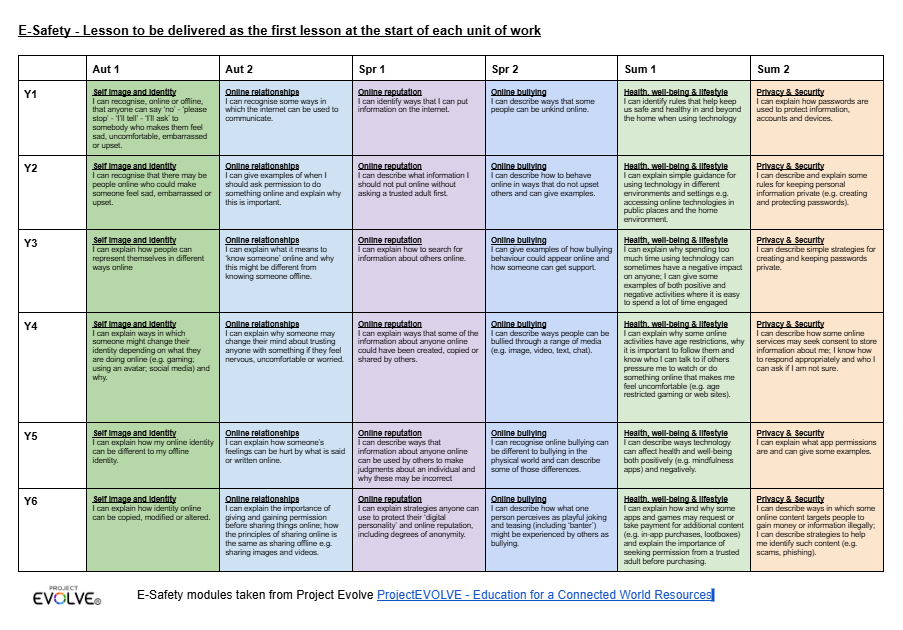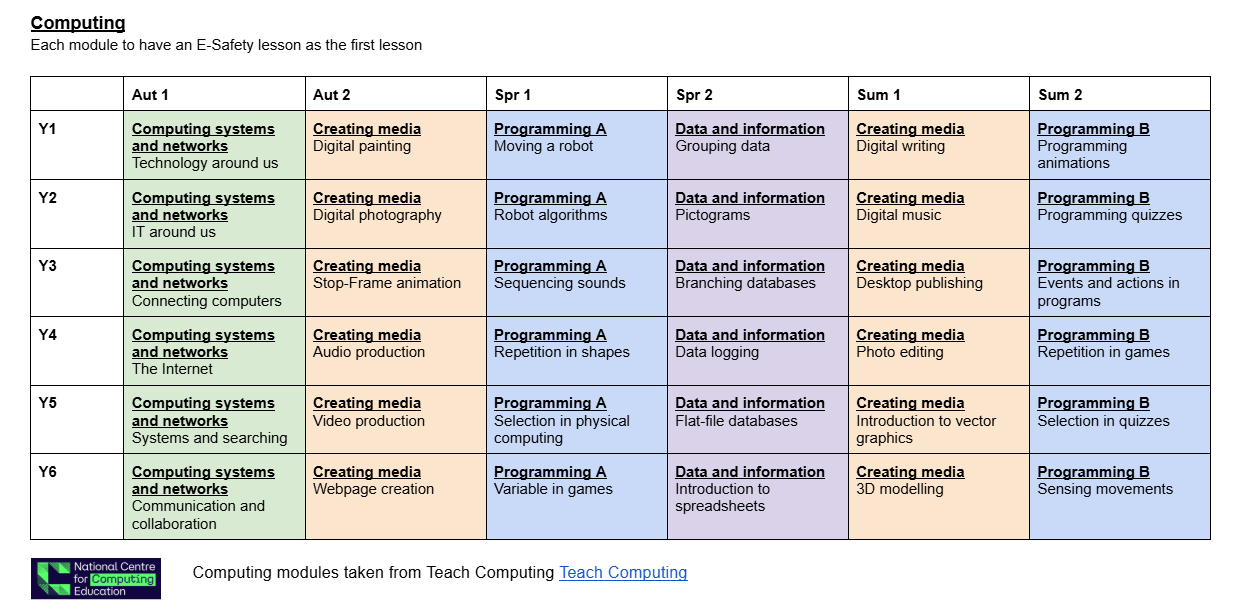Computing
Intent:
Computing prepares us for living in the modern world and for any future developments that may come about. We use computing in all areas of our lives - for playing games, texting our friends, searching new information and storing documents that are important to us. Computing helps us communicate more efficiently with the world. By working with computing, we learn to think logically and creatively; preparing us for living in the digital world. Computing links closely with maths, science and design technology. By knowing how technology works, you will be able to create programmes, express yourselves and develop your ideas to share with all the world.
Implementation:
At St Walburga’s, our computing curriculum is based on the National Curriculum which states that a high-quality computing education equips pupils to use computational thinking and creativity to understand and change the world. Computing has deep links with mathematics, science, and design and technology, and provides insights into both natural and artificial systems. Our bespoke curriculum carefully considers the cultural capital of our learners and reflects the diversity of them.
- Our computing curriculum is implemented through 6 week topics and is a learning journey with concepts which weave throughout the whole curriculum.
- The core skill of computing is computer science, in which pupils are taught the principles of information and computation, how digital systems work, and how to put this knowledge to use through programming. Our skills, knowledge and vocabulary were developed using Chris Quigley’s essential skills.
- Across the Key Stages and within each unit, our pupils have the opportunity to revisit the knowledge and key skills learnt. Each topic delivered is split into 3 parts: e-safety, digital literacy and coding. This aids retention, builds on prior knowledge and embeds all of the key skills taught. Pupils are equipped to use information technology to create programs, systems and a range of content, become digitally literate – able to use, and express themselves and develop their ideas through information and communication technology – at a level suitable for the future workplace and as active participants in a digital world.
- Adaptive teaching strategies, such as ease and stretch challenges, are used to ensure that our pupils are able to access our computing curriculum in a tailored and personalised manner allowing our pupils to build on the skills and knowledge they have learnt.
- To enrich our computing curriculum, we take part in Safer Internet Day and the local PCSO visits the school to discuss online safely to all pupils.
Impact:
The computational thinking and creativity to understand the modern world readies our children for an ever changing technological landscape. Children are taught how to be safe online, how to be digitally literate and the basics of coding and programming. Children are able to develop their ideas and use technology to communicate their learning. They have a clear understanding of technological language and teachers provide appropriate levels of support to guide the children in this using the language across the curriculum.
Long Term Plan







